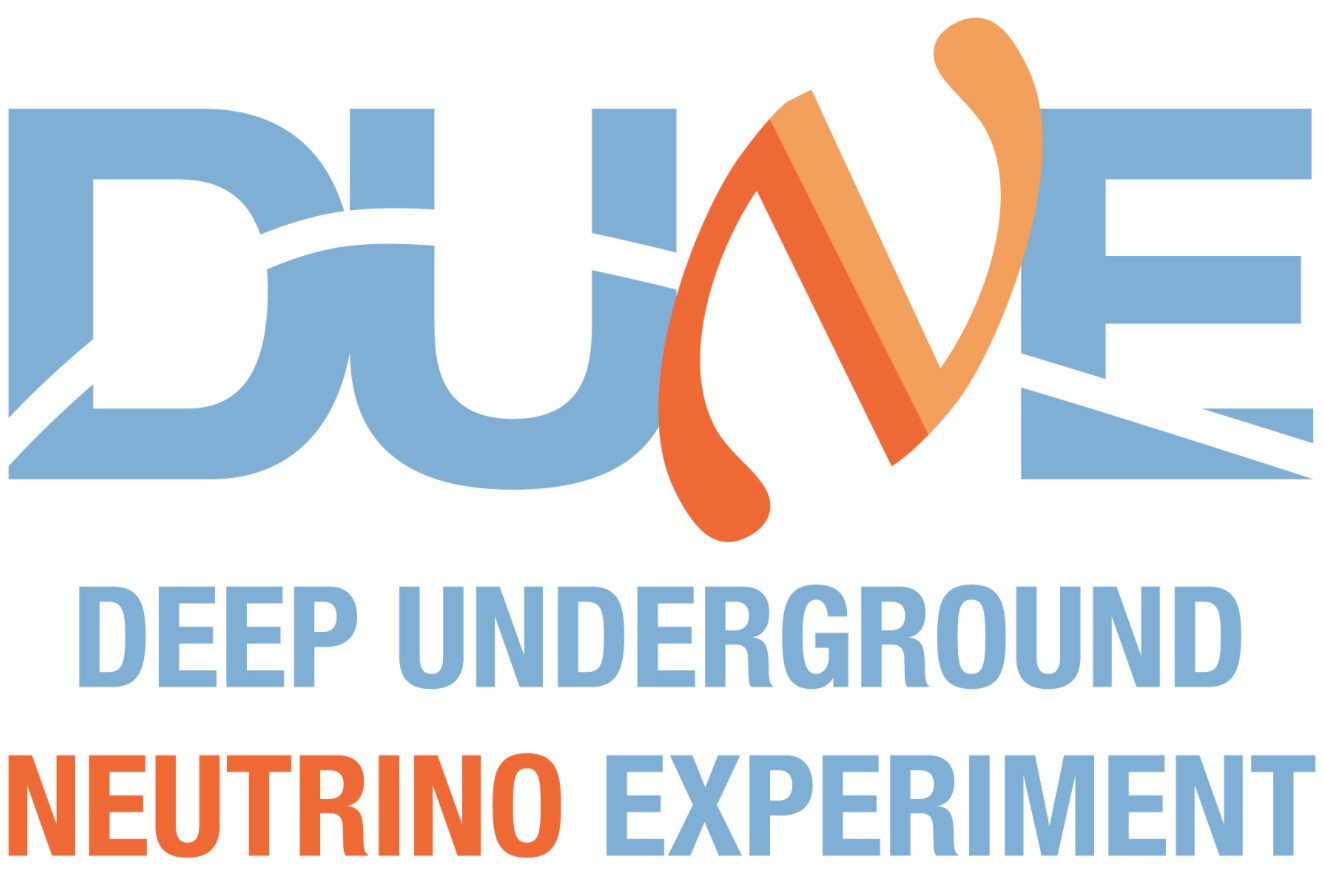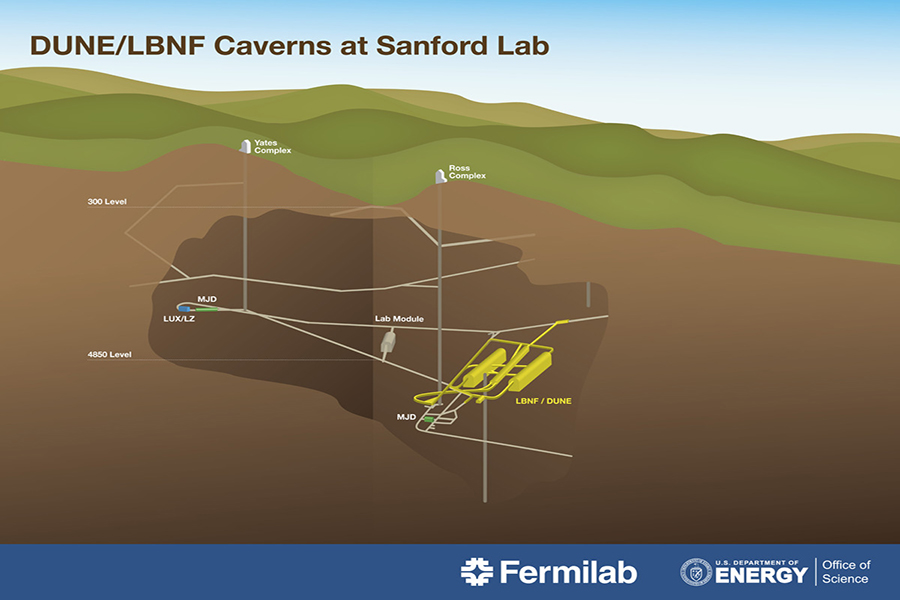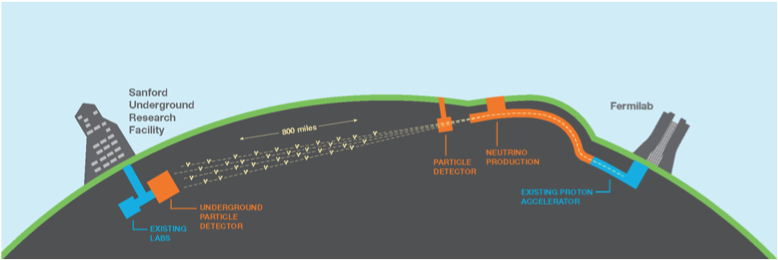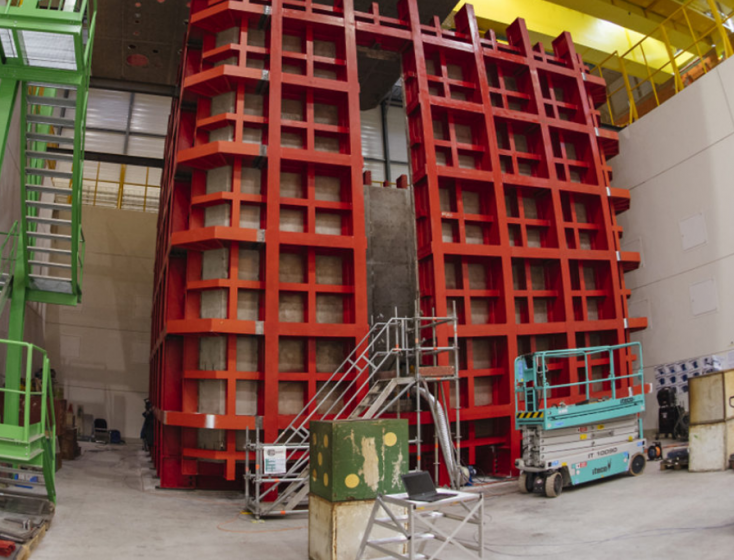DUNE555


The Deep Underground Neutrino Experiment seeks to measure neutrino CP violation (if it exists) and the neutrino mass ordering using a new intense beam to be built at the Long Baseline Neutrino Facility (LBNF).
The basic idea is shown in the figure below. Protons from the Fermilab Main Injector are directed towards a carbon target to produce pions. These pions (both plus and minus) are sign-separated and focussed using a pulsed magnetic field from a "horn" (so-called becuase of its shape). The pions are send into a long tunnel where they decay into muons and muon neutrinos. Due to the relativistic boost of the pions, the neutrinos mostly travel in the forward direction.
The neutrinos then travel 1,300 km to the Sanford Underground Research Facility (SURF) located in Lead, South Dakota where they are detected by a large liquid argon Time Projection Chamber (TPC).

UC Davis involvement in DUNE
Here at Davis we conduct small-scale experiments in support of DUNE physics and detector design, such as BACoN and ACED. In addition, we have developed the first realistic exclusive interaction model for low-energy electron neutrinos. Known as the Model of ARgon Low Energy Yield (MARLEY), this has become the standard model for designing DUNE to be capable of detecting a galactic supernova burst.
In addition, our group is participating in the prototype-DUNE single phase  prototype detector currently being built in a test beam at CERN. The purpose of this project is to build a 5% scale prototype of the DUNE TPC that will ultimately be installed at the LBNF far site at the Sanford Underground Lab in Lead, SD. Scheduled to run in late 2018, we are working on developing the noise model and data monitoring software for the detector, in addition to designing and prototyping the Power and Timing Card (PTC) for the DAQ electronics. The picture on the right shows protoDUNE SP being assembled at CERN.
prototype detector currently being built in a test beam at CERN. The purpose of this project is to build a 5% scale prototype of the DUNE TPC that will ultimately be installed at the LBNF far site at the Sanford Underground Lab in Lead, SD. Scheduled to run in late 2018, we are working on developing the noise model and data monitoring software for the detector, in addition to designing and prototyping the Power and Timing Card (PTC) for the DAQ electronics. The picture on the right shows protoDUNE SP being assembled at CERN.
More information on protoDUNE SP construction:
https://home.cern/about/updates/2017/08/construction-protodune-detectors-begins
